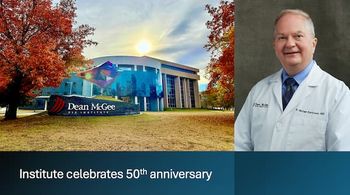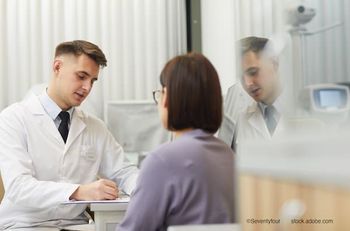
Manage dry eye disease with prevention, protection, prescriptions
Reviewed by Laura M. Periman, MD
Dry eye disease can be overwhelming, but addressing 3 patient categories—nutrition, hygiene, and neural stimulation and visual performance—can help clear up the condition, according to Laura M. Periman, MD.
Periman is the founder and director of dry eye services and clinical research for the Periman Eye Institute in Seattle, Washington.
Nutrition
Antioxidants and reactive aldehyde species inhibitors have a role in preventing innate immunity activation, and more research is being directed toward these preventative mechanisms, Periman said.
Although omega-6 fatty acids found in corn, safflower, and sunflower oils are thought to be less than beneficial, the nuances are important. When gamma-linolenic acid (GLA) from black currant seed oil is taken with omega-3 fatty acids DHA and EPA, there is a synergistic anti-inflammatory effect that inhibits inflammation as a result of generation of prostaglandin E1, Periman explained.
Hygiene and prescriptions
Treating the inflammation preoperatively improves accuracy of the intraocular lens calculations and enhances the postoperative refractive result. Periman showed that when lifitegrast (Xiidra, Novartis) was administered twice daily for 28 days preoperatively to 100 patients with confirmed dry eye who were undergoing cataract surgery, improvements were seen in accuracy, higher order aberrations, and speed. Likewise, when cyclosporine 0.05% was administered twice daily to 42 patients with dry eye before LASIK surgery, accuracy and refractive predictability improved.
A highly beneficial, broad-spectrum impact of chronic dry eye disease pathophysiology is seen with cyclosporine. Additionally, confocal microscopy studies show that cyclosporine improves the corneal nerve subbasal plexus, epithelial cell density, and the keratinocytes.
“These are ultrastructural effects that cannot be viewed during the examination,” Periman said. “When our patients describe their dry eye symptoms and you don’t see much fluorescein or lissamine green staining, recall that these ultrastructural consequences of chronic inflammation may very well may be occurring.”
Inflammation also interferes with normal nerve healing after LASIK, PRK, and SMILE treatments, when neuropathic pain can develop.
“Dry eye is also loss of immunoregulation, which fuels the vicious cycle of inflammation. The adaptive immunity of chronic dry eye disease has 4 phases: initiation, amplification, recruitment, and damage/self-perpetuation,” Periman said.
And this is where the immunoregulating therapeutics come in to address the vicious cycle: cyclosporine, lifitegrast, steroids, and intense pulsed light affect all 4 phases of chronic dry eye disease, she said.
Periman also noted that aqueous and evaporative dry eye are no longer considered separately, CDED is an interrelated double vicious cycle of inflammation where decreased tear production and meibomian gland dysfunction [MGD] contribute to and are negatively impacted by inflammation. “
“Meibomian gland dysfunction results from 6 interrelated mechanisms: bacteria and Demodex [mites], enzymes, inflammation, stasis of meibum, increased melting temperature of meibum, and obstruction/hyperkeratinization [BEISTO],” she said. “By layering on omegas, hygiene, immunomodulators, and IPL, we can address all 6 heads of the MGD BEISTO.”
Periman reminded physicians of the American Society of Cataract and Refractive Surgery’s preoperative recommendations to look, lift, push, pull on the eyelids to examine patients for myriad ocular surface disease coconspirators such as rosacea of the face and eyelids, floppy eyelid syndrome (heavily associated with obstructive sleep apnea), eyelid malposition, and incomplete lid closure (particularly relevant during sleep).
Incomplete lid closure should be addressed with approaches such as a silicone mask (Eyeseals 4.0; Eye Eco) to prevent ocular surface desiccation at night. Lid hygiene remains a standard recommendation, but avoiding surfactant-based cleansers is important in the meibum-deficient patient.
Deep cleaning of the lids is achieved with in-office ZEST kits (Zocular) that utilize manual debridement using okra-based polysaccharide gel (anti-inflammatory). Patients report symptom score improvements and effective home maintenance with mechanical eyelid cleaning and meibomian gland–stimulating devices such as NuLids (NuSight Medical). Patients should also be asked about prostaglandin use; products that stimulate eyelash growth can also cause orbital fat atrophy, skin hyperpigmentation, dry eye, and significant meibomian gland dysfunction, Periman noted.
Neural stimulation and visual performance
The goals are to create high visual performance under all conditions. For surgical patients, this means protecting the corneal surface preoperatively, postoperatively, and over the long term in order to produce a healthy tear film, healthy lacrimal functional unit (LFU), and healthy wound healing response.
Controlling inflammation leads to improved homeostasis. Neural stimulation in the postoperative patient is a great strategy to support the LFU as the corneal nerves recover from the surgical insults of cataract surgery or refractive surgery.
Neural stimulation definitely has a role. An external vibration that stimulates the meibum and an intranasal chemical device are expected to receive FDA approval soon, she explained.
“Leveraging all these strategies together can create real healing for your dry eye patients,” Periman concluded.
Laura M. Periman, MD
E: [email protected]
This article is adapted from Periman’s presentation at the virtual Real World Ophthalmology meeting. She is a consultant to manufacturers of dry eye therapies.
Newsletter
Don’t miss out—get Ophthalmology Times updates on the latest clinical advancements and expert interviews, straight to your inbox.
















































.png)


